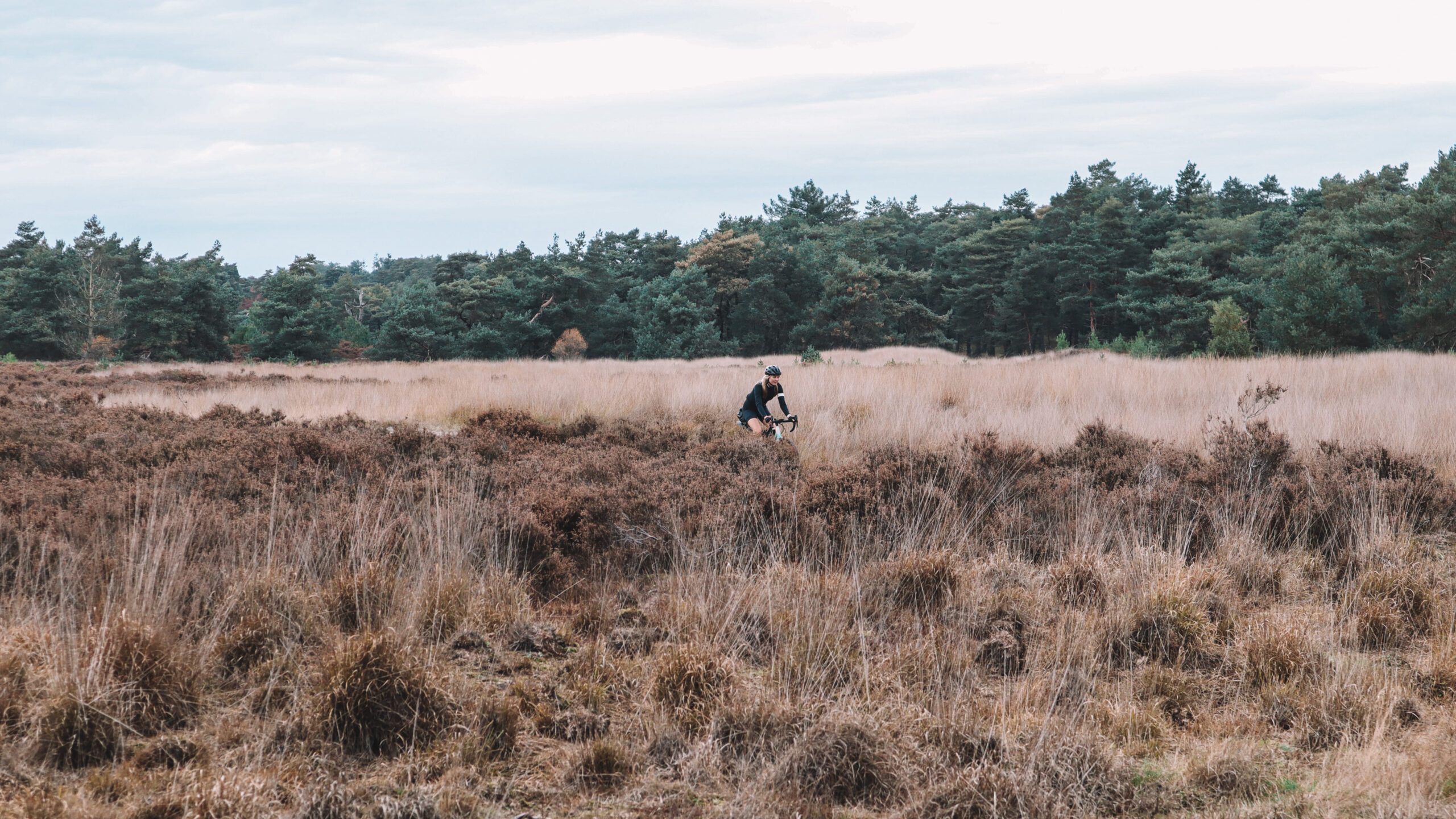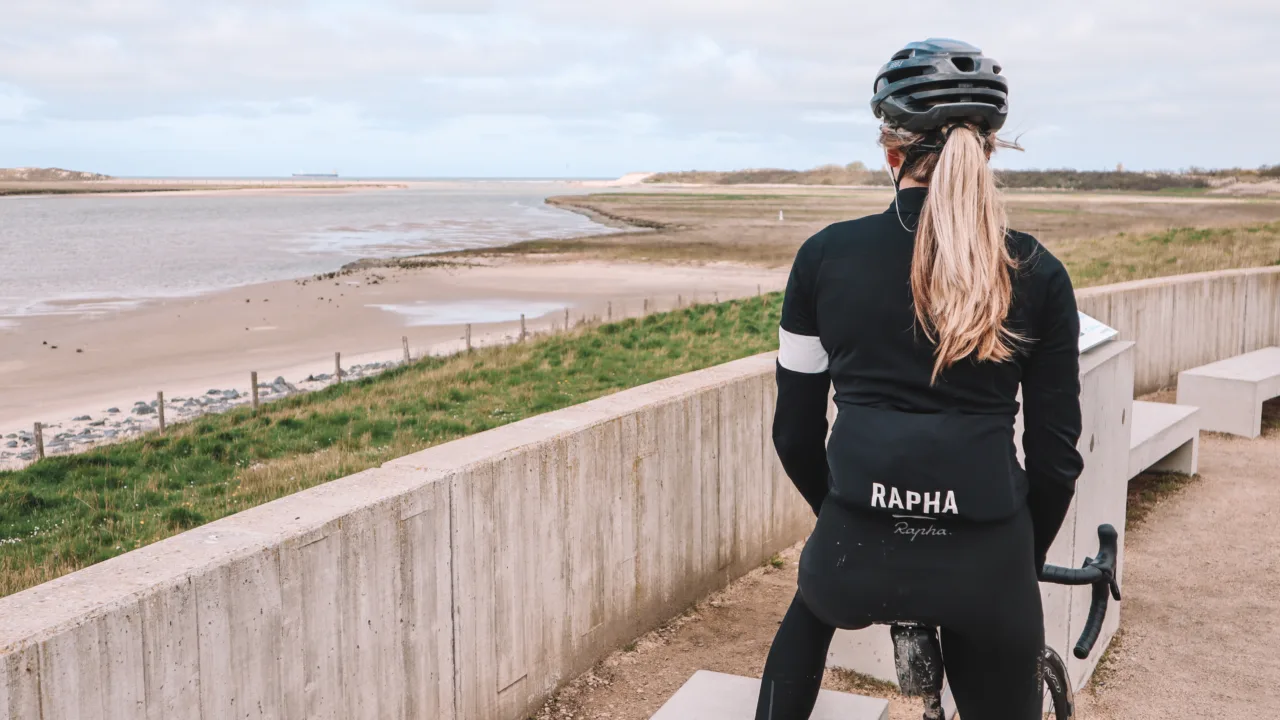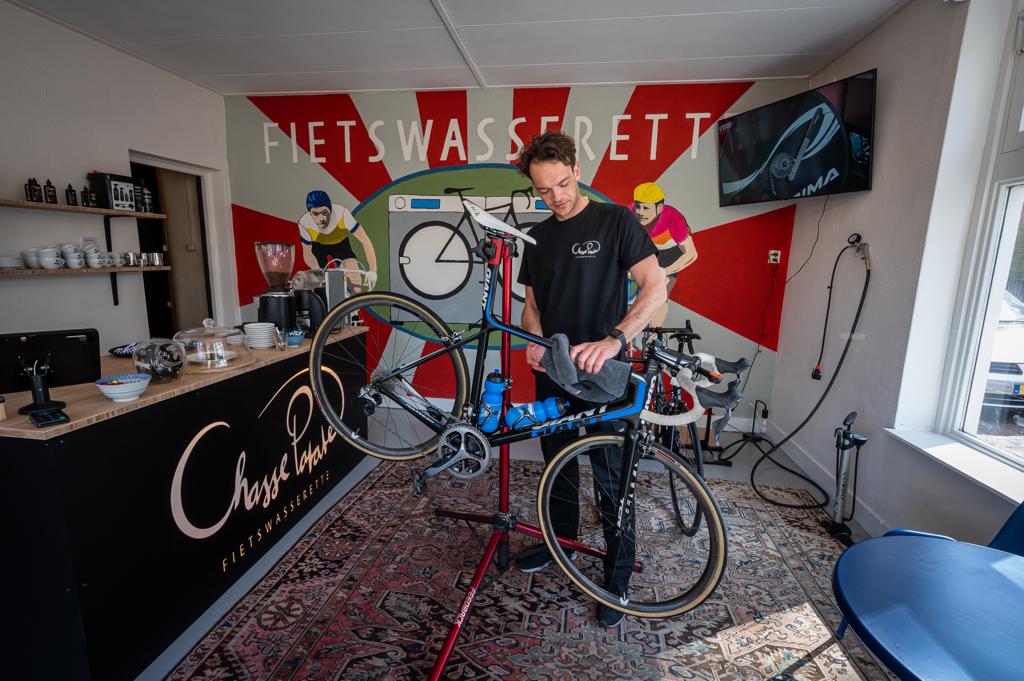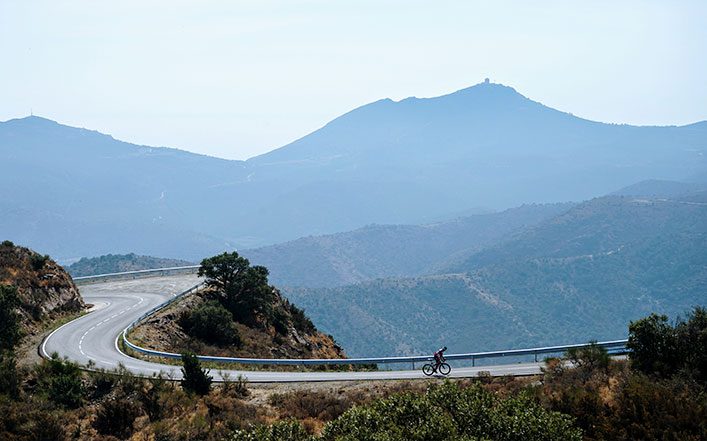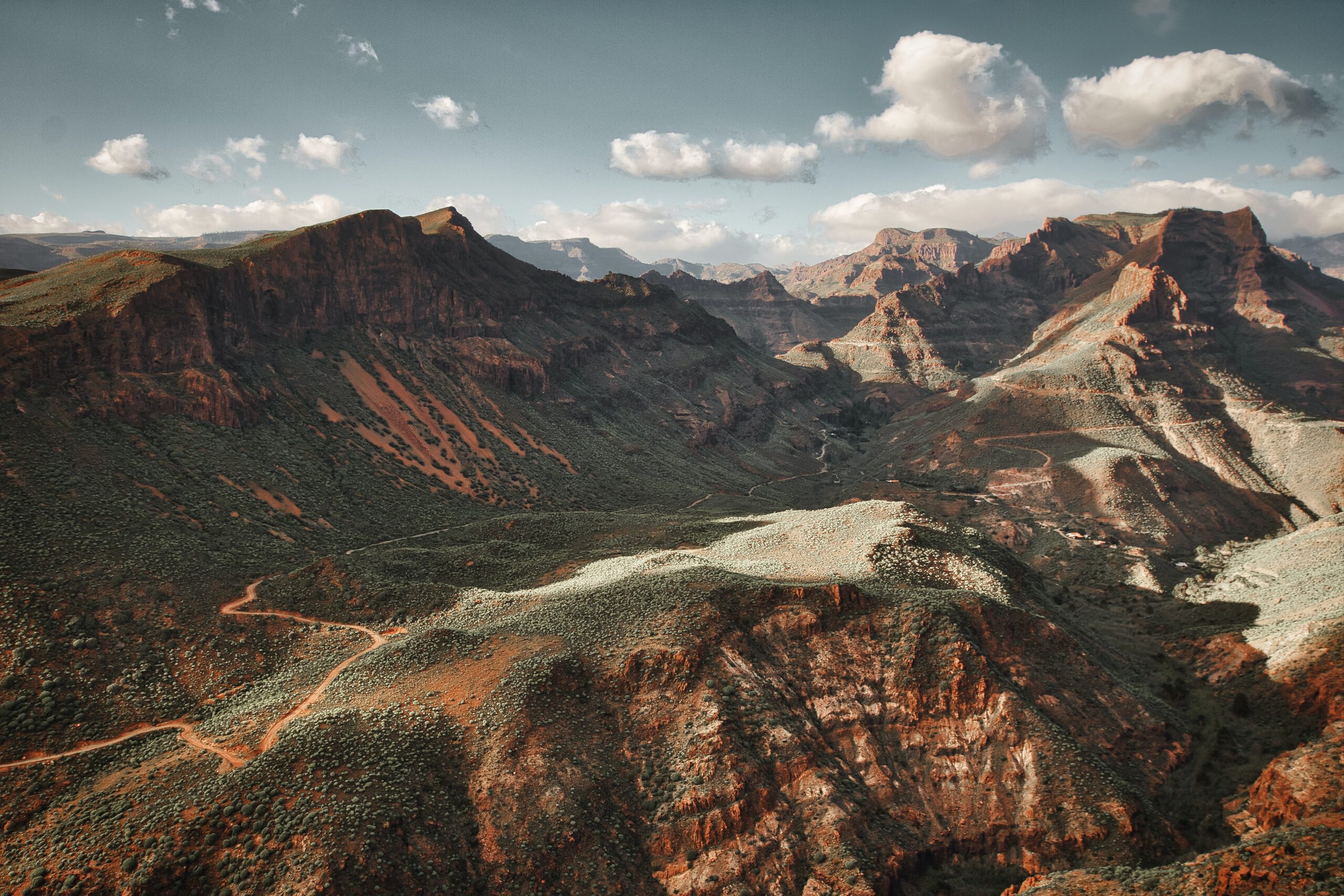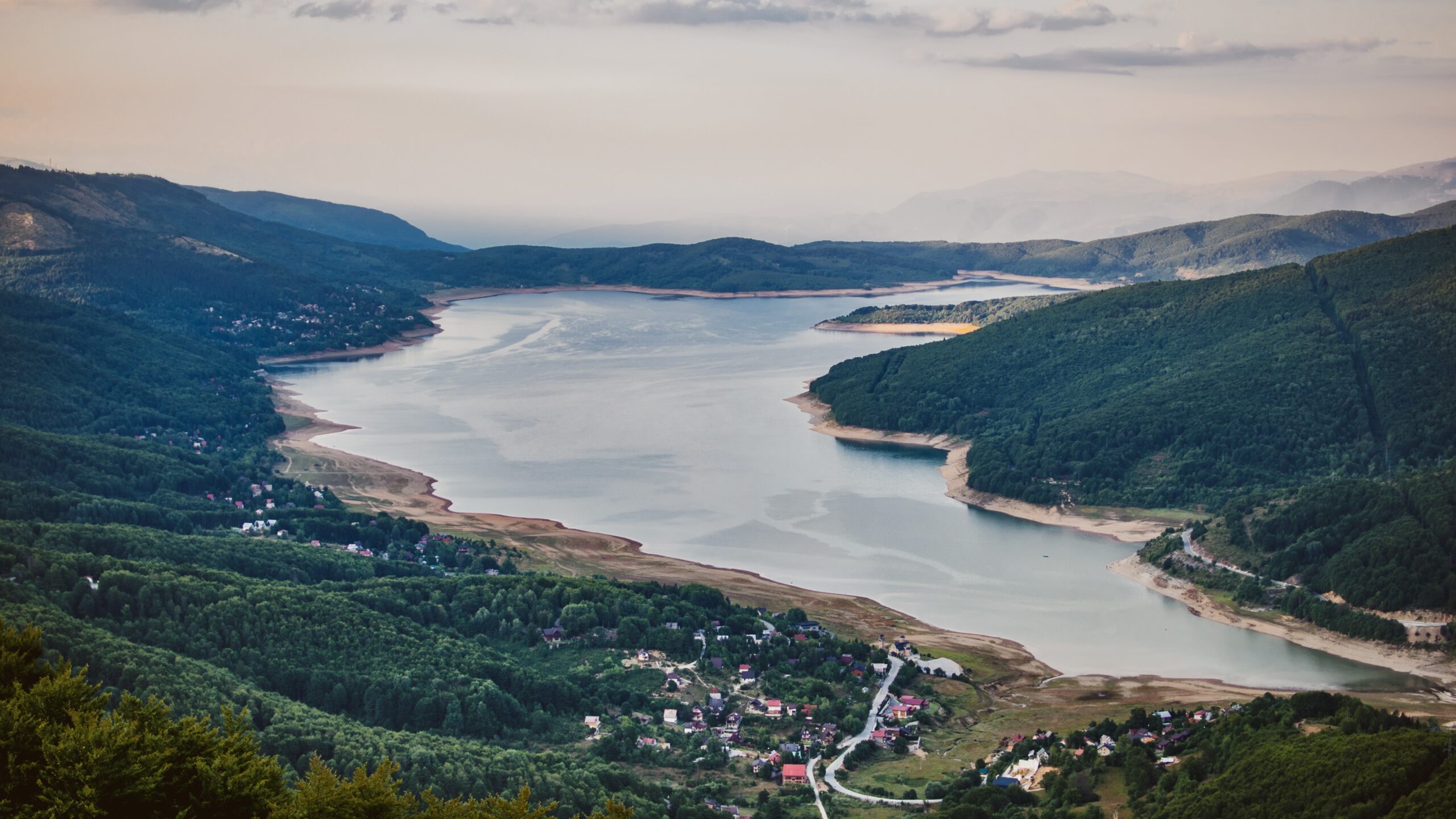A region often overlooked is the eastern region of Friuli Venezia Giulia. It is sandwiched between the Dolomites (west), Slovenia (with the Triglav National Park) and Carinthia on the north side. Logically, it's a region that is somewhat forgotten. Still, we want to give you five climbs you really should do. One is an absolute classic: the Monte Zoncolan. That one is in the list of Mortirolo, Stelvio, Blockhaus, Angliru and Lagos de Covadonga. Goat trails that the peloton does not like to conquer either. The Giro d'Italia has loved coming there in recent years. Particularly to then make the swerve to Slovenia. Friuli Venezia Giulia has more than enough to offer, you don't really need the neighbours for that. But as with many neighbours: it is handy if they are there.
Here are our tips for some great climbs. Do you want the routes too? Then comment below this blog and you will get the routes in your mailbox. Even more about this region? Then also read the blog of our explorer Kees, who in his adventure for the Giro d'Italia 2025 out also came through Friuli Venezia Giulia.
Monte Zoncolan
The mythical Monte Zoncolan. Once in a while you'll find it on the Giro d'Italia route. It can also justifiably be called a classic, so much so that it is in the classic rides of the Mountain High Chasers can. It is one of the reasons to descend to Friuli Venezia Giulia. But with 10 kilometres at almost 12 per cent average, you will have to bring your best legs of the day.
The rough figures (from Ovaro): 10.1 km - 1200 hm - 11.9% average with peaks up to 22%.
Tip for climbers: Take your smallest gear (look for a 1-to-1 ratio, such as a 30×30 or 34×34). For slightly stronger riders, a 36×34 or 34×30 is also sufficient.
Gravel tip: Combine the summit with quiet dirt roads around Ravascletto/Valcalda (after the descent).
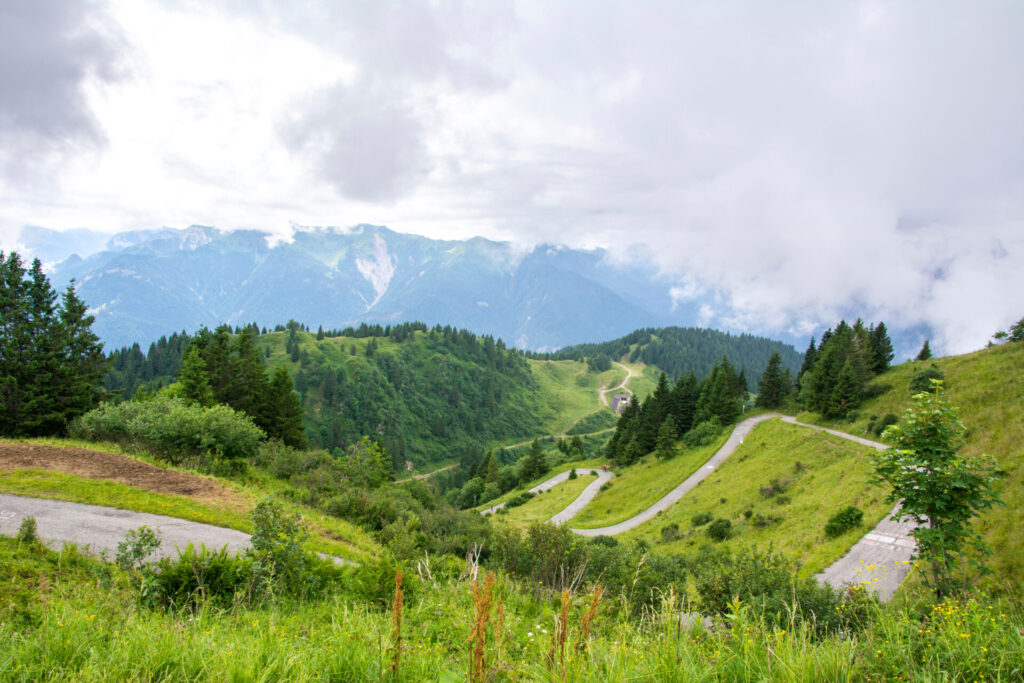
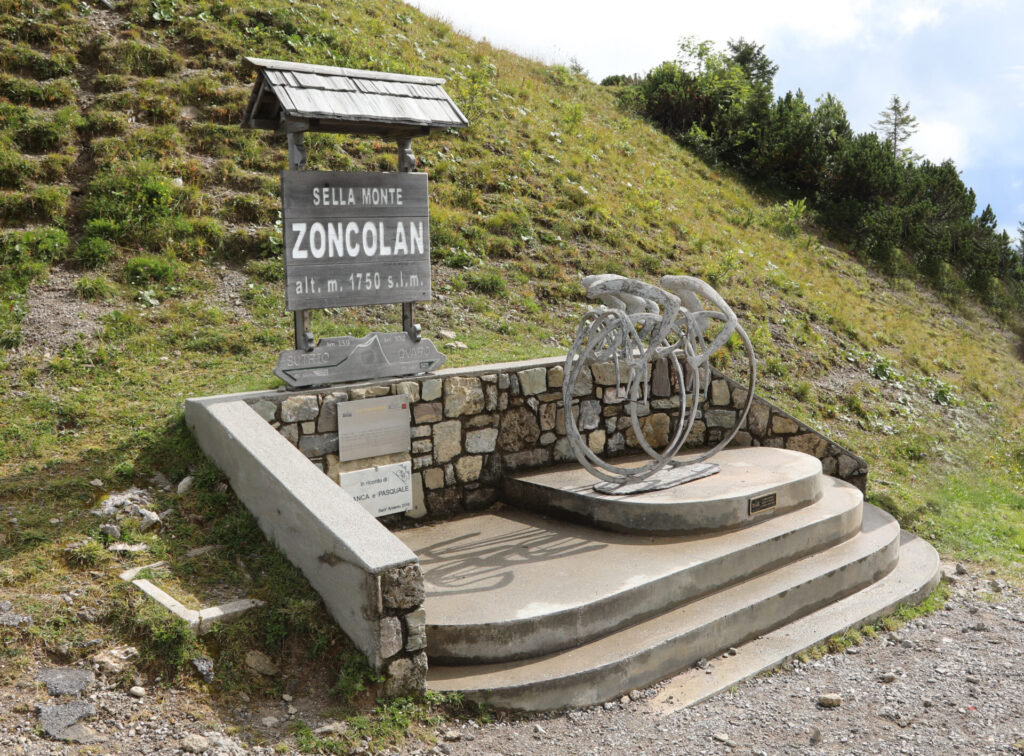
Monte Crostis via Tualis (Panoramica delle Vette)
Almost every region has a hidden or a forgotten climb. Friuli Venezia Giulia has Monte Crostis. First and last in the Giro d'Italia in 2011. At least, it was on the route, but in the end was never climbed? Why so? According to the experts, too dangerous, and especially in 2011 with the death of Wouter Weylandt during that Giro, it was the organisers who took their eggs for their money. That's saying something.
In figures: 14.5 km - 1430 hm - 9.8% average - maximum 17%
Season/road type: higher Panoramica may be (partly) unhardened/rough; check conditions.
Expert tip: Prefer to ride the higher part with gravel tyres (above 35mm) or bring some extra inner tubes.
Monte Crostis, Runchia, Italy
- Distance: 13.6 km, Elevation difference: 1381 m, Average gradient: 10.1 %
Monte Lussari
Anyone who follows professional cycling a bit will immediately think of Primoz Roglic at Monte Lussari. On his way to winning the climbing time trial and the Giro, his chain fell off. He was riding with a 1x ahead and somehow that went wrong. For those keen to follow in the footsteps of the Slovenian once, we offer the 'Santo di Lussari' here. The climb to the small pilgrimage site on the border with Slovenia is a real demolisher for anyone who is up for it. Seven kilometres of pain? You will be asked. The reward, though, is worth it.
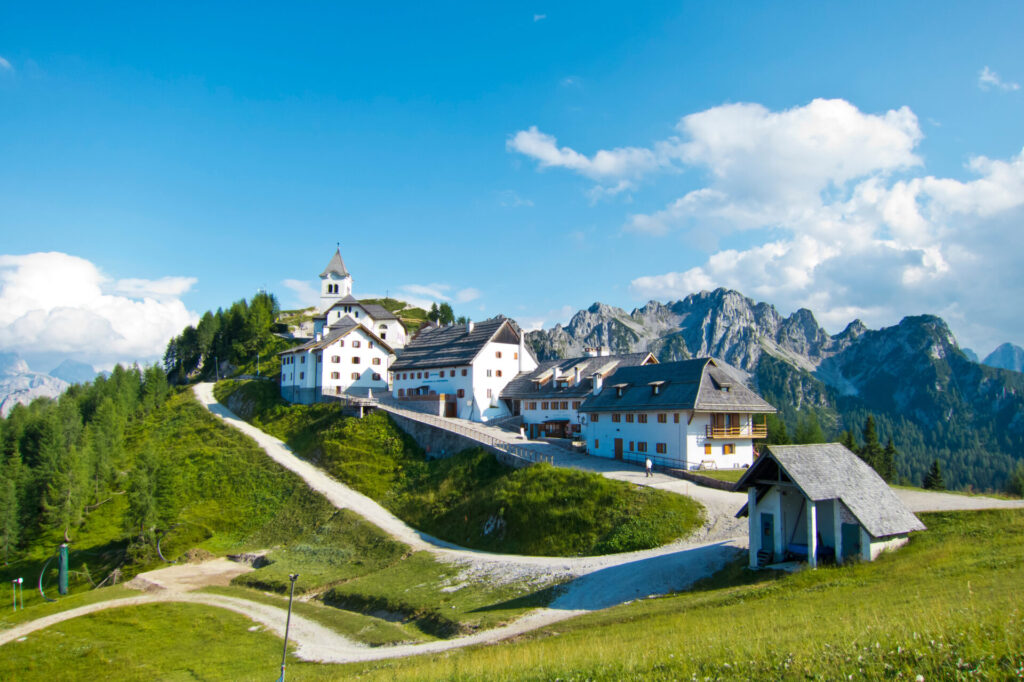
Monte Santo di Lussari, Italy
- Distance: 7.1 km, Elevation difference: 849 m, Average slope: 12.9 %
In hard Figures : 7.1 km - 849hm - 12.9% avg.
Practical: it's a road that also has some gravel lanes. You can obviously go over it with road bike tyres, but keep that in mind on the descent
Gravel tip: There is a dirt descent on the east side and the north side, which you can of course ride up. Do bear in mind very steep gravel paths here, up to 25%+. A little bit of hike-a-bike will be in order then.
Monte Matajur (Rifugio Pelizzo)
Just east of provincial capital Udine (known for football club Udinese) you will find Monte Matajur, which climbs to the border with Slovenia. This is also a beautiful climb to a 'rifugio so, where you'll also find an astronomical observatory. It is a true finish climb, although it has not been in the Giro d'Italia before. Although: in the Giro Donne 2021, it was one of the finish places.
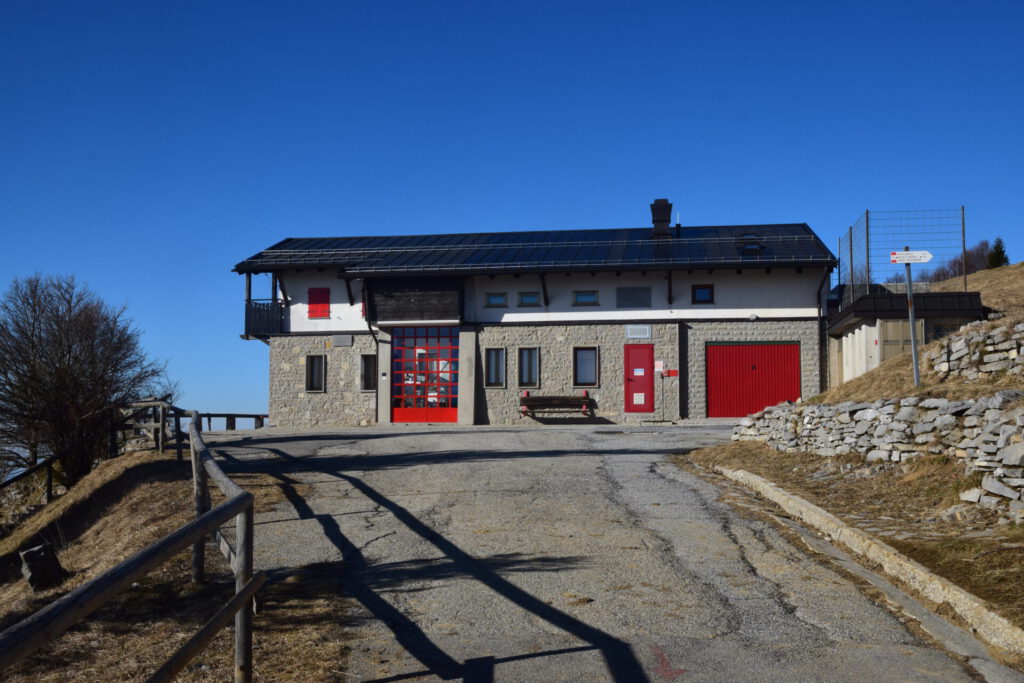
The hard numbers (Cepletischis): 11.8 km - 1084 hm - 9.2% avg.
Practical: It is a fairly gentle climb that ends with a narrow strip of tarmac at Rifugio Pelizzo at 1,300 metres. You have stunning views from there and can literally see over the border.
Gravel tips: From the top, it's only for experienced gravelers. You will find some singletracks and trails towards Slovenia there and they are really tough.
Sella Nevea (Chiusaforte)
It's not the biggest climb, not the highest climb (with only 1200m above sea level as its summit point), but you can certainly break down here for a while. In total, the climb is 'only' 10 kilometres long with an average of just under six per cent, but you will encounter some steep sections, especially in the beginning. The climb is characterised by beautiful limestone walls and if you go in autumn, you have the chance of seeing some beautiful colours that you might only expect during an Indian Summer in New England. It is a relatively unknown pass, so you will probably have the realm to yourself. Just like Rigoberto Uran, who was first at the top in the Giro in 2013.
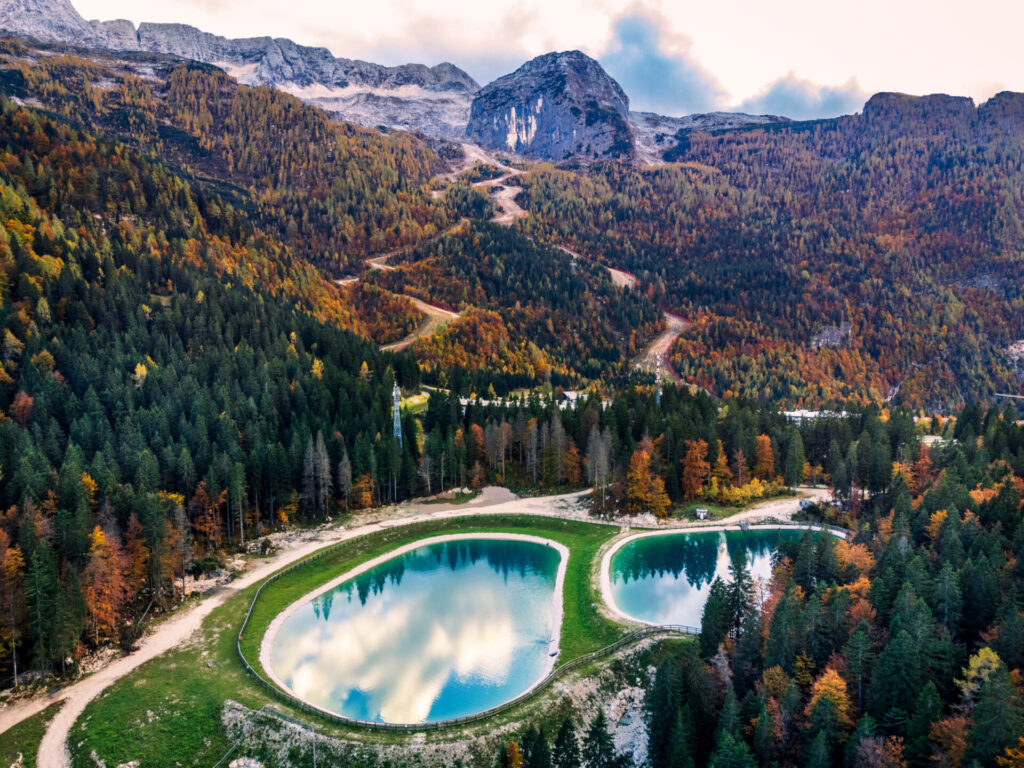
Hard Figures: 10.1 km - 606 hm - 5.9% average (from Chiusaforte)
Combination tip (race): move on to Altopiano del Montasio (short, steep spur) for extra altimeters.
Gravel corner: forest/gravel options in the valleys around the pass; check locally.
Passo di Sella Nevea, Chiusaforte, Italy
- Distance: 10.1 km, Elevation difference: 606 m, Average slope: 5.9 %
Sella Chianzutan (Tolmezzo)
A lovely warm-up from Tolmezzo. Here you have the ideal combination of beautiful hairpin bends and also little traffic. Crossing the little road over the bridge at Lago di Verzegnis is highly recommended. The views are fantastic on both the Sella Chianzutan and the other surrounding climbs.
Hard Figures (for the Tolmezzo side): 9.6km km - 555 hm - 6.1% avg.
Gravel tips: beautiful strade bianche can be found around Verzegnis with the Colle dei Larici as an alternative approach route.
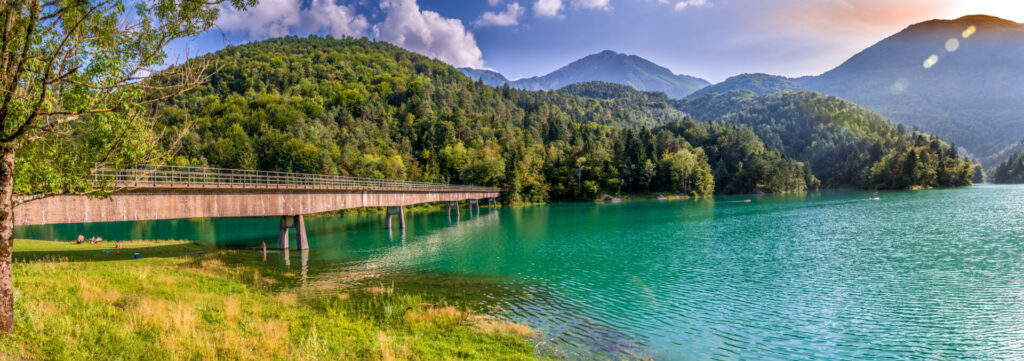
Sella Chianzutan, Chiaulis, Italy
- Distance: 9.6 km, Elevation difference: 555 m, Average slope: 6.1 %
Friuli Venezia in a long weekend
If you're considering a nice long weekend of cycling in this region, we've put together a simple little plan for you. When in Italy, you can't really go wrong if you choose a trattoria or a bar, for lunch or a coffee. In Tolmezzo, you'll find at least one good pizzeria in 'Ai Portici'. For a good osteria with classic pasta dishes, go to 'antica osteria valle'. Want to get something in the morning beforehand or something sweet (or a sandwich) after your ride: Panificio Pasticceria Pan di Casa.
Around Cividale you have lots of delicious restaurants. Should you be looking for something a bit more fancy (where you can also sleep, by the way) then 'Al Merlo Bianco' a fantastic option. Here you can book the hotel.
Quick plan (3 days - race & gravel options)
- Day 1: This is a warm-up day. You probably have a day's riding behind you. Then start your adventure in Tolmezzo by climbing the Sella Chianzutan and then you take the luss via Verzegnis, which gives you a first taste of the area in 60 kilometres and almost 1800 altimeters. There is also a variant where you take out the first climb, then you have a real warm-up lap of 50 kilometres. Choose accommodation nearby such as in Al Benvenuto in Tolmezzo.
- Day 2 : This region is really only about one climb. The mighty Monte Zoncolan via Ovaro. You can then descend via Sutrio. After that, you can extend the loop with the Passo Duron. Then you get a real queen's ride with almost 100 kilometres and 3200 altimeters.
- Day 3: Seeking adventure at the Monte Crostis to Rifugio Chiadinas (on the road bike) or full Panoramica Do keep in mind gravel road surfaces and watch the weather carefully. After all, you are in the mountains.
Practical tips
- Best base: If you really want to tackle the Zoncolan and the Crostis, you're going to find accommodation in Ovaro) or in Tolmezzo, such as Al Benvenuto where you can also catch the Chianzutan right away. For the other climbs, for example Ai Casali near Cividale (for Matajur, among others) a good option.
- Period: late May-October; The ascent of Panoramica at Monte Crostis is highly seasonal/weather dependent.
- Equipment and resistance (road bike): Although the climbs do not get above 2,000 metres, you will find plenty of steep sections here, so a good mountain gear is recommended. Think 34×32 or lighter for Zoncolan; pros rode similar.
- Security: It's still Italy, so road safety is a thing. It is not as super crowded here as in other tourist regions. On several climbs, you have to deal with tunnels like on the Zoncolan. Bringing a light is no luxury then. Always check the weather too, because you are in the Alps. .

